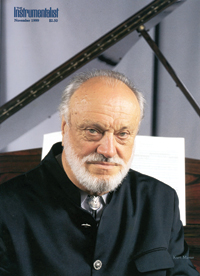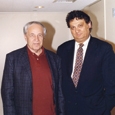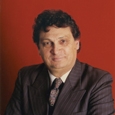 The musical world lost two conducting titans in recent months with the deaths of Pierre Boulez (1925-Jan. 5, 2016) and Kurt Masur, (1927 -Dec 19, 2015). Both seminal conductors exerted a tremendous influence on performers and music patrons for more than half a century. Kurt Masur was the last of the old style maestros and was music director emeritus of the New York Philharmonic, where he served with great aplomb and artistic distinction from 1991-2002. As a specialist in the classical-romantic genre he was known for his authoritative interpretations of Beethoven, Brahms, Mahler, Wagner, and Bruckner. Pierre Boulez is recognized as one of the world’s greatest interpreters and composers of the avant-garde music of the 20th century. They will be deeply missed.
The musical world lost two conducting titans in recent months with the deaths of Pierre Boulez (1925-Jan. 5, 2016) and Kurt Masur, (1927 -Dec 19, 2015). Both seminal conductors exerted a tremendous influence on performers and music patrons for more than half a century. Kurt Masur was the last of the old style maestros and was music director emeritus of the New York Philharmonic, where he served with great aplomb and artistic distinction from 1991-2002. As a specialist in the classical-romantic genre he was known for his authoritative interpretations of Beethoven, Brahms, Mahler, Wagner, and Bruckner. Pierre Boulez is recognized as one of the world’s greatest interpreters and composers of the avant-garde music of the 20th century. They will be deeply missed.
I am fortunate to have interviewed these maestros for The Instrumentalist in 1999, and later my recollections were included in my book, The Golden Age of Conductors, published by Meredith Music in 2010. The complete interviews may be found in these sources.
Many special and nostalgic memories come to mind now as I reflect on how I came to know these eminent musicians. I first learned of Pierre Boulez in 1965 through a recording I purchased of his wonderful interpretation of Stravinsky’s Le Sacre du Printemps with the French Orchestra National. Later, in 1992, I treasured his definitive recording of this masterpiece with the Cleveland Orchestra. I remember that as a music major back in the 1970s, my music history professor sparked my further interest in Boulez when he informed the class that he rated Pierre Boulez along with Schoenberg and Stravinsky as the most influential composers of the 20th century.
At that time in my development I was not familiar with the mathematical serialization of Boulez’s music. With more musical growth, however, I have realized that he was indeed a most influential composer of the 20th Century and was at the vanguard of the avant-garde movement in music. Today I listen admiringly to his original and creative music and respect his genius. His most often played composition is Le Marteau Sans Maitre, “The Hammer Without a Master.” This musical masterpiece was written in 1954 for solo voice and six instruments. My favorite recording of this piece is conducted by Maestro Boulez.
I first became acquainted with Kurt Masur, in 1988 when I purchased a VHS tape of Masur leading the Leipzig Gewandhaus orchestra in a glorious performance of an all-Wagner concert including the Tannhauser overture and the Liebestod from Tristan und Isolde. It was music making of the highest order.
It was definitely a momentous opportunity to be asked to interview these men in 1999 for The Instrumentalist. I interviewed Maestro Boulez in Orchestra Hall right after his rehearsal of Schoenberg’s Moses und Aron with the Chicago Symphony Orchestra. Needless to say, I was a bit nervous because I had read of Boulez’s reputation as an “enfant terrible” in his youth and of his fame as one of the world’s greatest composers and interpreters of avant-garde music. I knew I was meeting a true maestro. Surprisingly, he quickly put me at complete ease as we met in his dressing room behind Orchestra Hall. He greeted me with a warm inviting smile and graciously granted me over an hour of his time to talk about the art of conducting. We discussed a range of subjects, including score study, conducting techniques, and his musical influence on the future directions of music.
I vividly recall that at the start of our interview Pierre Boulez stated he considered himself first as a composer and wanted his compositions to primarily establish his legacy. During our interview I gleaned his insights into the art of conducting. He spoke with pride of how, as a conductor, he disseminated the music of the 20th century, making it a part of normal life, and through his concerts and recordings bestowing an anthology of 20th century music for future generations to enjoy and learn from.
As a teacher of conducting myself, I was most interested in learning that Maestro Boulez considered score study to be the most necessary emphasis for the training of conductors. He explained that he approached the score from the composer’s point of view because he is aware of the effort that goes into writing a score, saying, “If you have a precise idea of the score and an inner representation of the score (dynamics, phrasing, clarity, balance, chord position, etc.) then the gestures will come almost automatically. Conducting gestures come from the music; the gestures do not make the music. You cannot teach those gestures, conductors simply have to respond to what they want to hear.”
I was surprised to learn that Boulez did not use the piano during a preliminary study of a score. “Using the piano is like taking morphine,” he stated. “It kills the inner ear.” He explained how, at the Conservatoire in Paris, when he studied solfege, he had to write down all the exercises by ear. With that training he learned to not depend upon a representation of how a chord would sound from the piano, but learned to hear it with his inner ear. Having this inner representation of the score also helps a conductor or performer detect a mistake automatically if the actual representation does not coincide with what you hear internally.
It is this exact expectation of sound that explains why Boulez does not use a baton for conducting. He is confident that with both hands he can shape the sound he wants. Although Boulez meant something different as he spoke about the importance of the visual effect for the future of music, I immediately connected the importance of his visual interpretations of this music through his hand gestures as being paramount for interpretation.
James T. Rohner, publisher of The Instrumentalist, accompanied me to the interview of Kurt Masur in June 1999. We three met in the lobby of the Drake Hotel in downtown Chicago. Masur would conduct a concert of the New York Philharmonic at Ravinia that evening that would include one of my favorite symphonies – Mahler’s Symphony No. 1 in D Minor. In the lobby I was first awed by Kurt’s physical appearance. The six-foot-three bearded giant of a man was impressively dressed in a blue suit with a white shirt enhanced by a decorative western tie. After introductions I realized that I was in the presence of great musical knowledge, humility, and deep compassion for humanity. Masur spoke passionately about conductors, composers, and the value of music education for young people. His eloquent advocacy that afternoon continues to ring in my memory: “We have to give students a place where they can feel at home, where they remember that they still have a soul, a heart,” he stated. “Music can make them feel this.”
As he expressed his views on conducting techniques in response to my questions, he explained that “the technique of conducting can be learned, but for artistry you have to bring a creative imagination to the piece. Developing an imaginative musical vision,” he explained, “matters more than beating time in a particular way. You have to understand the reasons for each marking in a score. I feel we have too many conductors who are going for success and not for the truth.”
I am still thrilled when I recall the truth and beauty I heard in Masur’s interpretation of Mahler that evening in June 1999 at Ravinia. We had excellent seats in the center of the 3,400-seat pavilion equipped with state of-the art sound facilities for the outdoor concert. Kurt Masur and the New York Philharmonic achieved perfection. His interpretation reached peaks of eloquence and nobility while avoiding any display of the narcissism or histrionics that some conductors use when performing Mahler. Gustav Mahler once said that music should capture and reflect the emotions, and this is exactly what Masur and the orchestra delivered as they brought out all the mood changes and tempo shifts that characterize Mahler’s First Symphony. In my mind’s eye I retain the visual imagery of Kurt Masur’s clean and clear gestures. This is the way that I will always remember him. From the slow sustained beginning of the 1st movement to the triumphant ending of the symphony, Masur’s honest communication with the orchestra produced a profound revelation of the truth found in the music. Years later, that concert resonates with me still.






